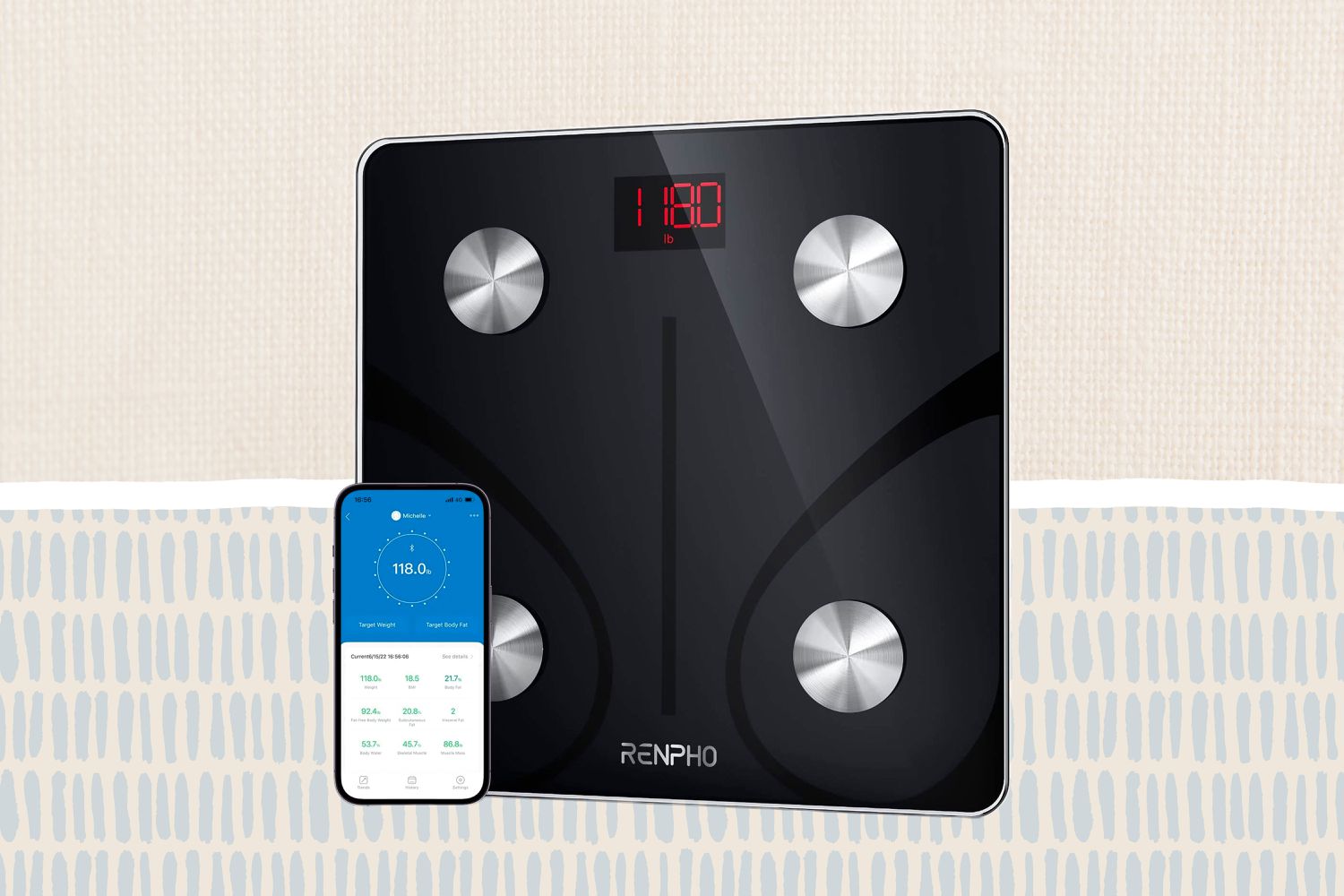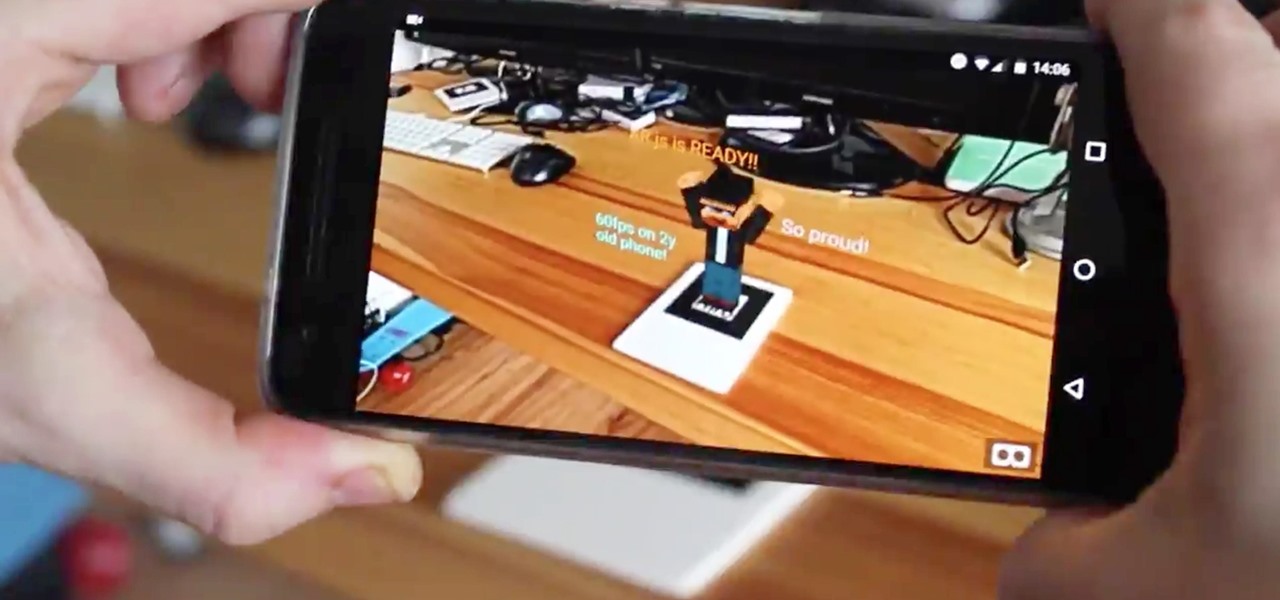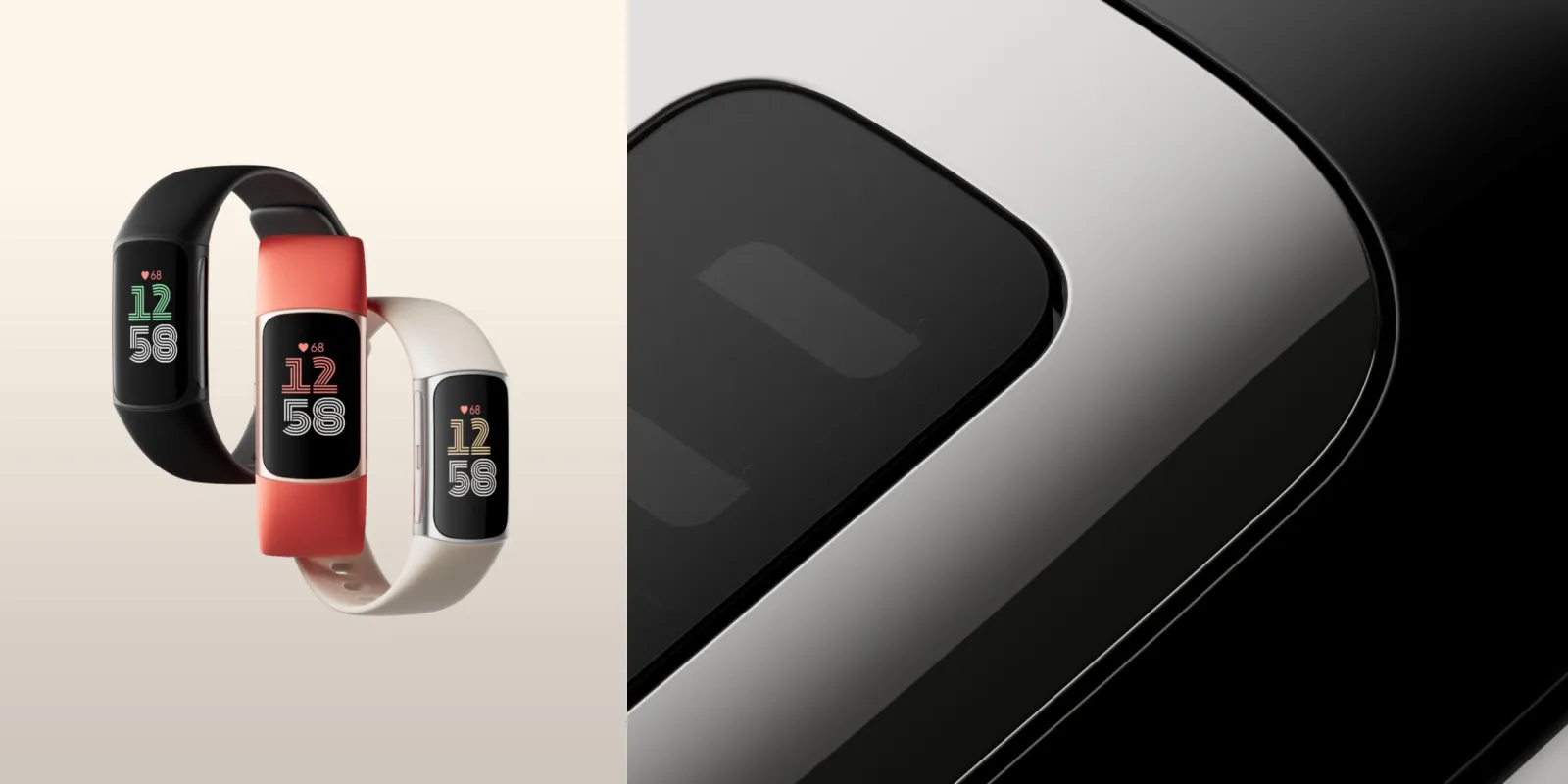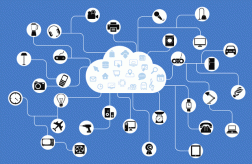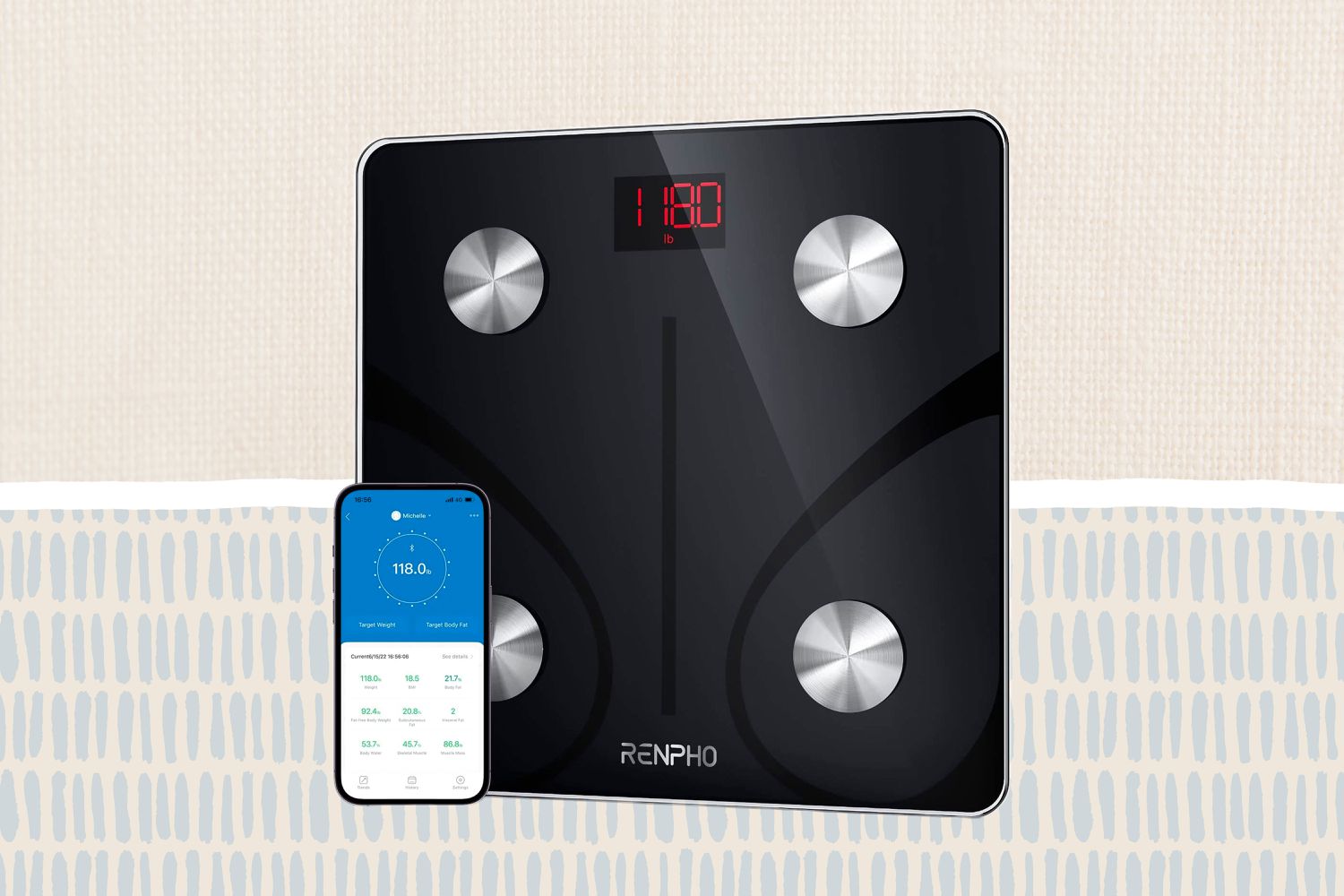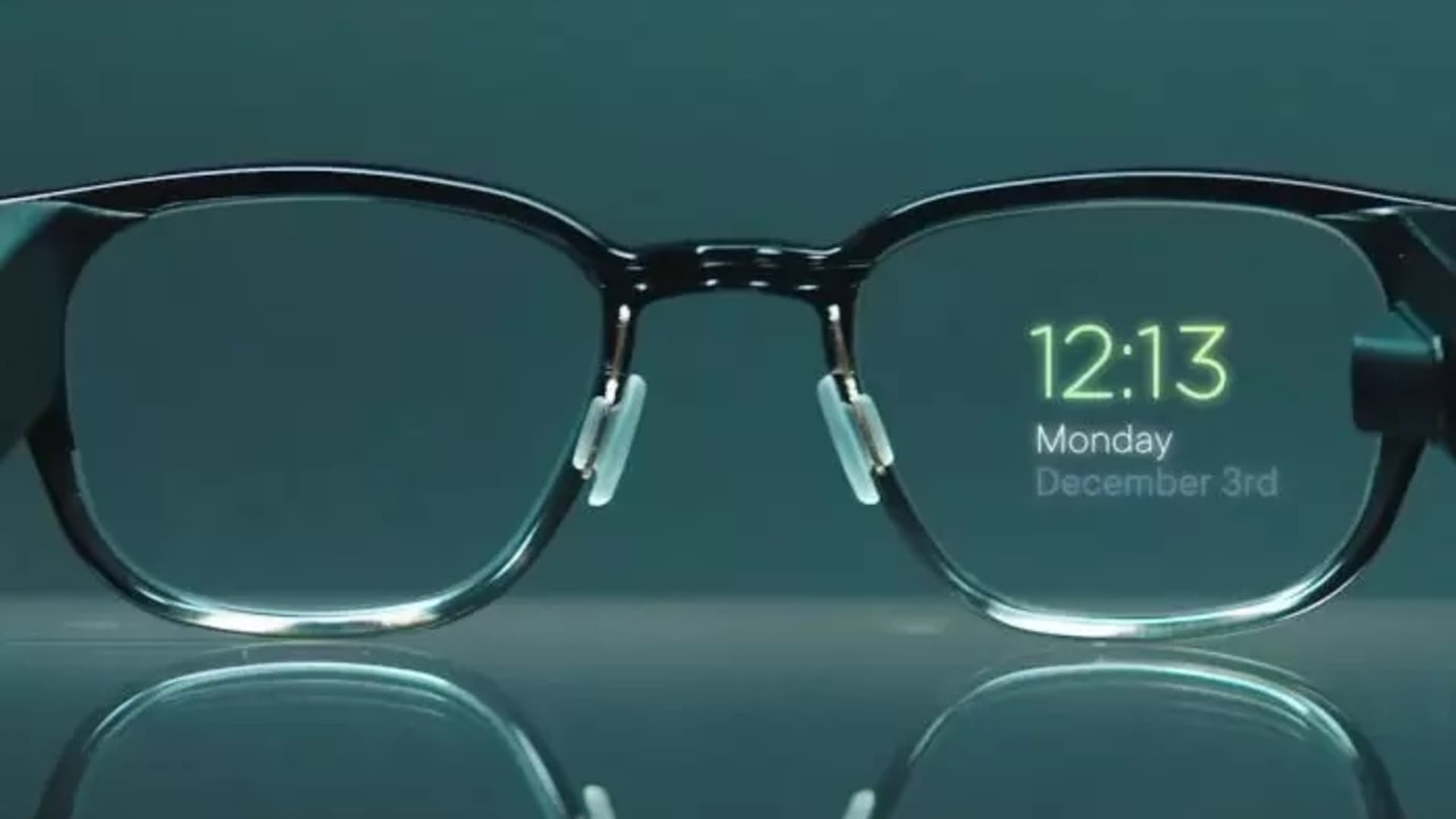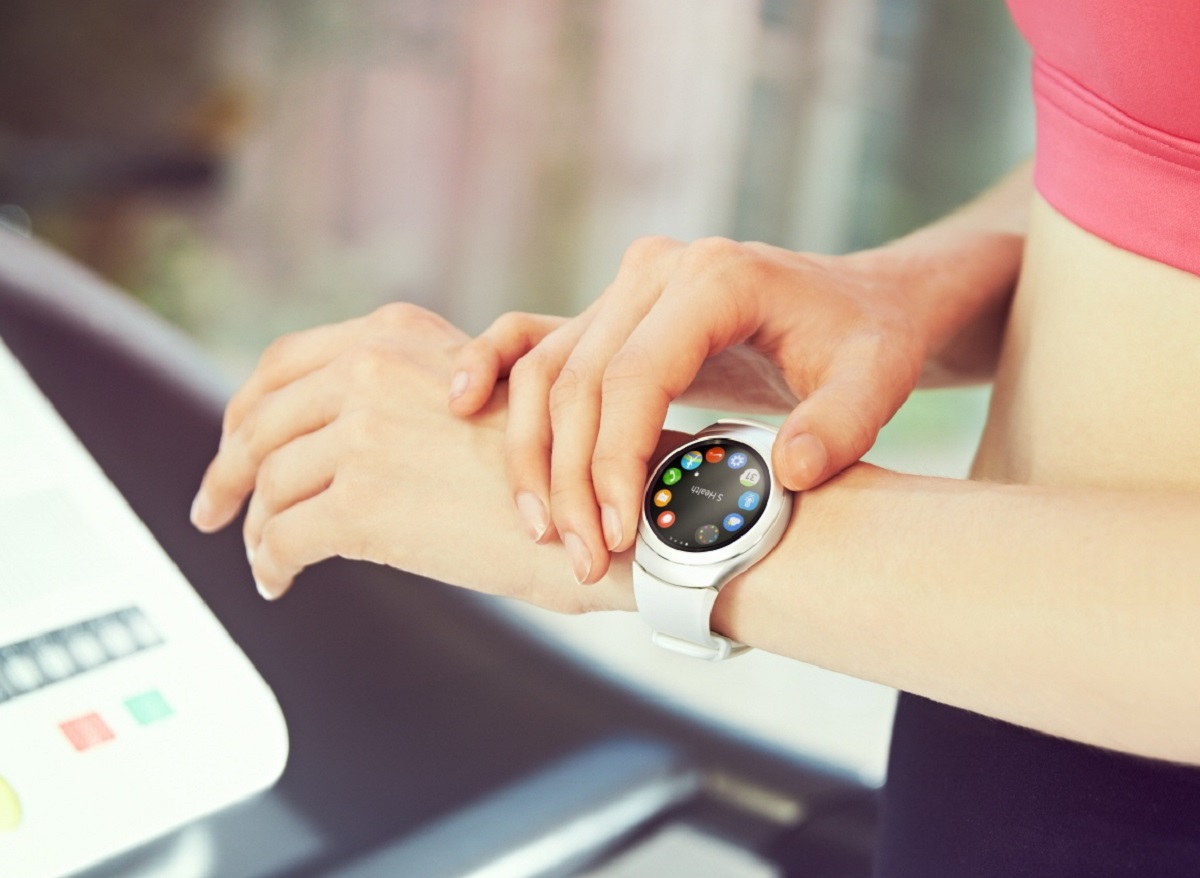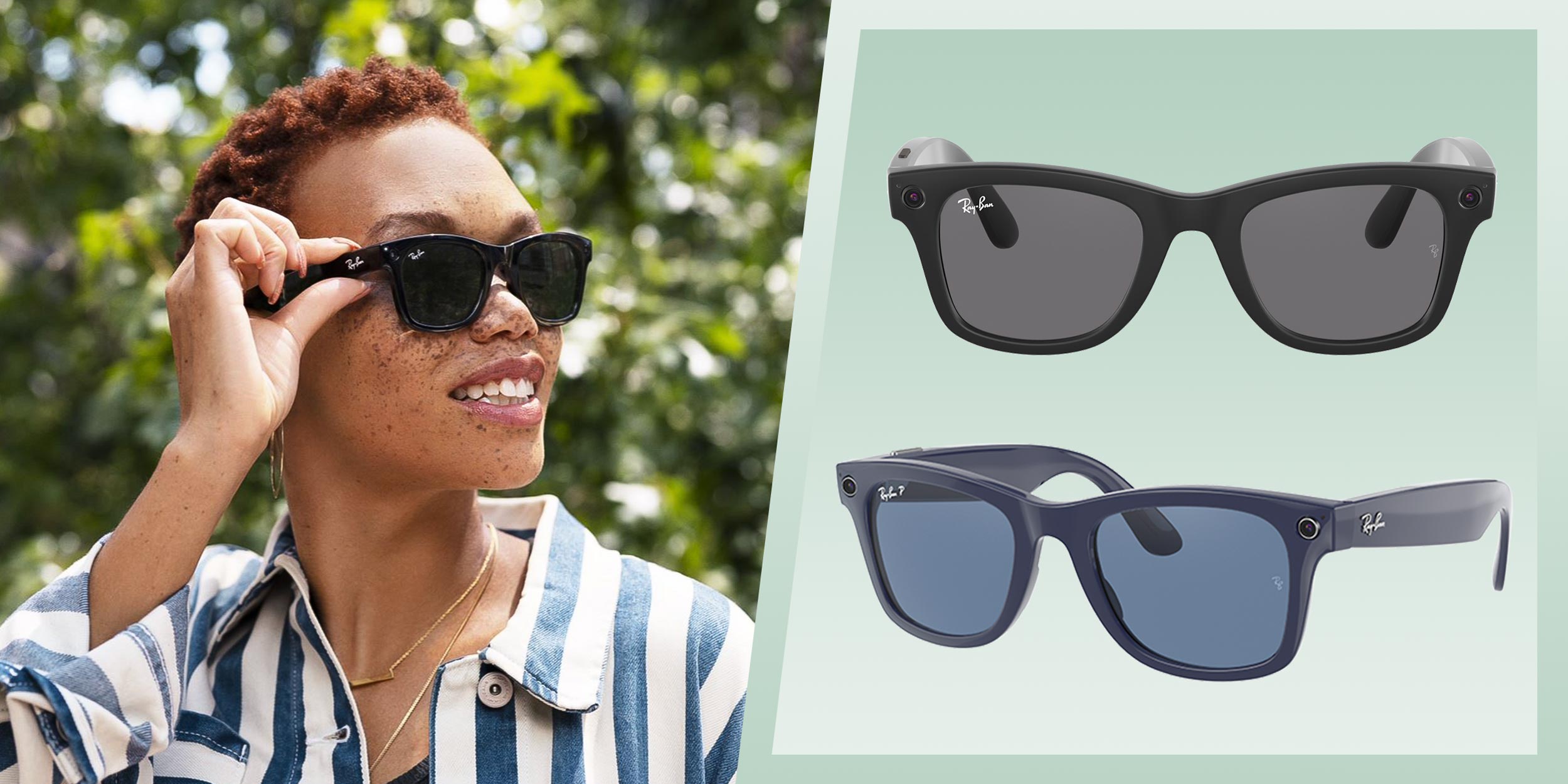Introduction
Smart glasses have revolutionized the way we interact with technology, extending their capabilities beyond just visual enhancement. One of the most fascinating features of smart glasses is their ability to track and monitor health and fitness metrics. With built-in sensors and advanced technology, they can provide real-time data on various aspects of our well-being, allowing us to take control of our health in a whole new way.
These high-tech eyewear devices are designed to seamlessly integrate with our daily lives, offering a hands-free and convenient solution to monitor our health and fitness goals. Whether you’re an athlete looking to track your performance or a fitness enthusiast aiming to lead a healthier lifestyle, smart glasses can be a game-changer.
By leveraging cutting-edge technology, smart glasses can monitor a range of important health and fitness metrics, providing valuable insights into our overall well-being. From tracking heart rate and steps to analyzing posture and sleep patterns, these intelligent eyewear devices have the potential to transform the way we approach our health and fitness routines.
In this article, we will explore how smart glasses work to track health and fitness, and how they can assist us in achieving our wellness goals. Through their innovative features and functionality, these glasses are poised to play a significant role in the future of healthcare and personal fitness.
How Do Smart Glasses Work
Smart glasses utilize a combination of sensors, cameras, and advanced algorithms to track and monitor health and fitness metrics. These glasses are equipped with an array of sensors such as heart rate monitors, accelerometers, gyroscopes, and even oxygen sensors. By collecting data from these sensors, smart glasses can provide accurate and real-time information about various aspects of our physical well-being.
The heart rate monitor is one of the key features of smart glasses. It uses optical sensors to measure changes in blood flow and monitor our heart rate. This allows us to track our heart rate during different activities, giving us insights into our cardiovascular health and helping us optimize our workouts.
In addition to heart rate monitoring, smart glasses incorporate accelerometers and gyroscopes to track steps and distance. These sensors detect our movement and calculate the number of steps we take throughout the day. They can also estimate the distance traveled, providing a valuable metric for measuring our daily activity levels.
Calorie tracking is another important functionality of smart glasses. By combining data from the heart rate monitor and activity sensors, these glasses can calculate the number of calories burned during physical activities. This information is particularly useful for those who are looking to manage their weight or monitor their energy expenditure during workouts.
Moreover, smart glasses can monitor our sleep patterns. Using the built-in sensors, they can analyze our sleep duration, quality, and even detect disturbances during the night. This data helps us understand our sleep patterns and make adjustments to optimize our rest and recovery, leading to overall improved well-being.
Monitoring Heart Rate
One of the key features of smart glasses is their ability to monitor heart rate. Through the use of optical sensors embedded in the frames, these glasses can measure changes in blood flow and calculate our heart rate in real-time.
This heart rate monitoring capability is particularly useful during workouts and physical activities. By continuously tracking our heart rate, smart glasses can provide valuable insights into our cardiovascular health and help us optimize our exercise routines.
During high-intensity workouts, it’s important to maintain the appropriate heart rate range to maximize the benefits of the exercise without overexerting ourselves. Smart glasses with heart rate monitoring can help us stay within our target heart rate zones, ensuring that we are pushing ourselves enough to see improvements while still keeping it safe.
Furthermore, heart rate monitoring can also be valuable in everyday life. It can provide insights into our stress levels and overall well-being. By monitoring our heart rate throughout the day, smart glasses can help us identify patterns and triggers that may contribute to stress, and allow us to take necessary steps to manage it effectively.
For individuals with specific health concerns or conditions, such as high blood pressure or heart disease, monitoring heart rate becomes even more critical. Smart glasses can provide continuous monitoring and alerts, notifying users if their heart rate goes above or below a certain threshold. This real-time feedback can potentially be life-saving, allowing individuals to take immediate action if necessary.
Additionally, the heart rate data collected by smart glasses can be synced with health and fitness apps on our smartphones or other devices. This integration allows for better tracking of our overall health and makes it easier to monitor trends and progress over time.
Overall, the heart rate monitoring feature of smart glasses enables us to have a deeper understanding of our cardiovascular health, improve our workout effectiveness, and make more informed decisions regarding our overall well-being.
Tracking Steps and Distance
Smart glasses are equipped with sensors like accelerometers and gyroscopes, allowing them to accurately track the number of steps we take and the distance we cover throughout the day. These sensors detect motion and translate it into step counts, giving us a clear picture of our daily activity levels.
The step tracking feature of smart glasses helps us stay motivated and reach our fitness goals. By keeping a record of our steps, we can set targets and challenge ourselves to increase our daily activity levels. This can be particularly helpful for individuals who have sedentary jobs or lifestyles, as it encourages them to incorporate more movement into their day.
In addition to step tracking, smart glasses can also estimate the distance covered during activities. By analyzing the data from the sensors, these glasses can calculate the distance traveled based on our stride length and the number of steps taken. Knowing the distance covered can be helpful for those who enjoy running, walking, or any other activity where distance is a key factor.
Tracking steps and distance with smart glasses provides us with an objective measure of our physical activity. It allows us to set goals and monitor our progress over time. By aiming for a certain number of daily steps or increasing our distance gradually, we can gradually improve our fitness levels and overall well-being.
In addition to individual goals, smart glasses can also enable us to participate in challenges or competitions with friends, family, or coworkers. Many smart glasses have social sharing features that allow us to compare our step counts or challenge others to reach certain milestones. This gamification aspect can be a great motivator to keep us engaged and committed to our fitness routines.
Furthermore, tracking steps and distance with smart glasses can also enhance our awareness of our activity levels throughout the day. By visualizing the numbers and seeing how they change throughout different activities, we can make conscious choices to incorporate more movement into our routines. For example, we may choose to take the stairs instead of the elevator or go for a short walk during our lunch break.
In summary, smart glasses’ ability to track steps and distance provides us with valuable feedback on our daily activity levels. This feature helps us set goals, stay motivated, and make conscious choices to lead a more active lifestyle.
Counting Calories
Smart glasses have the ability to count calories, making it easier for us to monitor our energy expenditure and manage our dietary intake. By combining data from the heart rate monitor, activity sensors, and advanced algorithms, these glasses can provide a fairly accurate estimation of the number of calories burned during physical activities.
Calorie counting is an essential aspect of weight management and maintaining a healthy lifestyle. With smart glasses, we can get a better understanding of our energy balance and make informed decisions about our nutrition and fitness routines.
By tracking our heart rate during different exercises, smart glasses can calculate the intensity of our workouts and estimate the calories burned. For example, a high-intensity cardio session will result in a higher calorie expenditure compared to a leisurely walk. This information allows us to adjust our workouts and make sure we are meeting our fitness goals.
In addition to exercise-related calorie tracking, smart glasses can also provide insights into our daily activities and their associated calorie burn. By monitoring our steps, distance, and overall activity levels, these glasses can estimate the calories burned throughout the day, even during non-exercise activities. This awareness can be particularly helpful for those who have sedentary jobs and want to incorporate more movement into their daily routine.
Smart glasses can also integrate with nutrition tracking apps, allowing us to log our food intake and easily keep track of our calorie consumption. By combining the information on calories burned with calories consumed, we can have a clearer picture of our energy balance and make necessary adjustments to achieve our desired weight or fitness goals.
It is important to note that calorie counting with smart glasses provides estimates and should be used as a general guideline rather than an exact measurement. The accuracy of the calorie count may vary depending on factors such as individual metabolism and the quality of the sensors used in the glasses. Nonetheless, it is a valuable tool for creating awareness around our energy balance and supporting our dietary and fitness choices.
By understanding the calories burned during different activities and monitoring our calorie intake, smart glasses empower us to make informed decisions about our nutrition and achieve a healthier lifestyle.
Monitoring Sleep Patterns
Smart glasses have the capability to monitor and analyze our sleep patterns, providing valuable insights into the quality and duration of our sleep. By wearing these glasses during the night, we can gather data on our sleep cycles, detect disturbances, and make adjustments to improve our rest and recovery.
Sleep is an essential part of our overall well-being, and the quality of our sleep directly affects our physical and mental health. Smart glasses equipped with sensors, such as accelerometers and gyroscopes, can detect our movements and analyze our sleep patterns throughout the night.
By monitoring our sleep duration, smart glasses can provide us with information on whether we are achieving the recommended amount of sleep for our age group. This data can be particularly helpful for individuals who struggle with sleep deprivation or have irregular sleep patterns.
Smart glasses can also analyze the quality of our sleep by assessing factors such as the time spent in different sleep stages, including deep sleep and REM (rapid eye movement) sleep. These stages of sleep play crucial roles in our restorative processes, and understanding our sleep composition can help us identify any imbalances or disruptions.
Furthermore, smart glasses can detect disturbances during sleep, such as snoring or sudden body movements. Detecting these disturbances can be vital for individuals who suspect they may have sleep disorders, such as sleep apnea. By analyzing the data collected by smart glasses, users can gain insights into their sleep patterns and seek professional help if needed.
Monitoring sleep patterns with smart glasses can also allow us to make lifestyle changes that promote better sleep. By having access to data on bedtime routines, sleep environment, and sleep duration, we can identify areas for improvement and implement strategies to optimize our sleep quality.
In addition, many smart glasses have features that gently wake us up during a light sleep stage, using vibrations or audio cues. This helps us wake up more naturally and feel more refreshed and energized in the morning.
Overall, the ability of smart glasses to monitor and analyze sleep patterns provides us with valuable information about our rest and recovery. By making adjustments based on this data, we can strive for more restful and rejuvenating sleep, leading to improved overall well-being.
Analyzing Posture
Smart glasses have the capability to analyze and track our posture, providing us with feedback and reminders to maintain proper alignment throughout the day. By leveraging built-in sensors and algorithms, these glasses can detect the position of our head and body, helping us improve our posture and reduce the risk of muscular imbalances and discomfort.
Poor posture is a common issue in today’s sedentary lifestyle and can lead to various musculoskeletal problems, including neck and back pain. Smart glasses with posture analysis feature can be a valuable tool in tackling this problem by providing real-time feedback on our body alignment.
Using an accelerometer and gyroscope, smart glasses can detect the orientation of our head and body. They can recognize slouching, tilting, and other incorrect postures, and alert us with gentle reminders to correct our positioning.
This real-time feedback can be immensely helpful for individuals who spend long hours sitting at a desk or engaging in activities that require prolonged postures, such as driving or standing. By receiving timely reminders to straighten our back and align our head and neck, we can prevent the development of poor postural habits and reduce stress on our muscles and joints.
Moreover, analyzing posture with smart glasses can raise our awareness and mindfulness about how we hold our bodies. Over time, this increased awareness can lead to better posture even without the need for constant reminders. By understanding how our postural habits affect our well-being, we can actively work towards maintaining a more aligned and balanced posture throughout our daily activities.
Smart glasses can also provide visualizations and data on our posture patterns over time, allowing us to track our progress and identify areas for improvement. This insight can be particularly valuable for individuals who are undergoing rehabilitation or physical therapy for posture-related issues.
In addition to the physical benefits, maintaining good posture can also have a positive impact on our mental well-being. Studies have shown that proper posture can enhance our confidence, mood, and overall self-perception.
In summary, smart glasses with posture analysis feature help us improve our postural habits by providing feedback and reminders. By maintaining proper alignment, we can reduce the risk of musculoskeletal problems, increase our comfort, and enhance our overall well-being.
Tracking Sports Performance
Smart glasses are not only useful for monitoring health and fitness in general, but they also offer unique benefits when it comes to tracking sports performance. Whether you’re an amateur athlete or a professional competitor, smart glasses can provide valuable insights into your training and help you optimize your performance.
One of the key features of smart glasses for sports performance tracking is their ability to collect data on various metrics during workouts and training sessions. These glasses are equipped with sensors that can measure factors such as heart rate, speed, distance, cadence, and even body movements.
By tracking these metrics, smart glasses can provide detailed feedback on how you’re performing and offer suggestions for improvement. For example, during a running session, smart glasses can monitor your heart rate, pace, and cadence, and provide real-time feedback on maintaining an optimal pace or avoiding overexertion.
Furthermore, smart glasses can track your progress over time and help you identify patterns and trends in your performance. By analyzing the data collected during different workouts and training sessions, you can gain valuable insights into your strengths and weaknesses, allowing you to focus on areas that need improvement.
Smart glasses can also be especially beneficial for team sports, as they can monitor and analyze the movements and coordination of the entire team. By capturing data on player positions, distances covered, and even ball movements, these glasses can provide valuable insights for coaches and players to optimize strategies and enhance team performance.
In addition to real-time feedback and performance analysis, smart glasses can also enable virtual coaching and training experiences. Using augmented reality (AR) technology, these glasses can provide visual cues, instructions, and even simulations of different scenarios, allowing athletes to practice and refine their skills in a more immersive and interactive manner.
Smart glasses can also facilitate cross-training and tracking multiple sports activities. For individuals who engage in various sports, these glasses can seamlessly switch between different modes, allowing you to accurately track and monitor each activity without the need for multiple devices.
Overall, smart glasses offer a wide range of features and capabilities to enhance sports performance tracking. By providing real-time feedback, analyzing performance data, and enabling interactive training experiences, these glasses are revolutionizing how athletes train and compete, allowing them to reach their full potential and excel in their respective sports.
Assisting with Exercises
Smart glasses can be excellent companions during exercise sessions, providing assistance and guidance to help us perform exercises with proper form and technique. These glasses leverage their advanced features and technologies to offer real-time feedback, instructional visuals, and even personalized workout routines.
One of the key benefits of smart glasses is their ability to provide visual cues and instructions during exercises. Using augmented reality (AR) technology, these glasses can overlay instructional images or videos onto our field of vision, guiding us through each step of the exercise. This can be particularly helpful for complex movements or exercises that require precise form.
Whether we are performing strength training exercises, yoga poses, or following workout routines, smart glasses can ensure that we are executing the movements correctly. By providing real-time feedback and visual cues, these glasses can help us maintain proper posture, alignment, and range of motion, reducing the risk of injury and maximizing the effectiveness of our workouts.
Smart glasses can also assist with tracking and monitoring our reps, sets, and rest periods. By synchronizing with fitness apps or integrated timers, these glasses can display countdowns or alerts, allowing us to stay on track during our workout sessions.
Furthermore, smart glasses can offer personalized workout routines tailored to our individual fitness goals and preferences. By analyzing our fitness profiles and tracking our progress, these glasses can recommend specific exercises and intensity levels, ensuring that we are optimizing our workouts for the best results.
For individuals who require modifications or adaptations due to injury or physical limitations, smart glasses can provide alternative exercises or variations that suit their needs. By customizing the workouts based on our capabilities, these glasses enable us to continue our fitness journey while working within our limitations.
Smart glasses can also encourage us to push our limits and challenge ourselves during workouts. By integrating gamification elements, these glasses can transform our exercise sessions into engaging experiences. Challenges, achievements, and virtual reward systems can motivate us to surpass our previous achievements and increase our overall fitness level.
In summary, smart glasses are excellent tools for assisting with exercises. They provide visual cues, real-time feedback, instructional visuals, and personalized workout routines to help us perform exercises effectively and safely. By leveraging their advanced features, these glasses enhance the overall exercise experience and contribute to our fitness progress.
Displaying Real-Time Data
One of the remarkable features of smart glasses is their ability to display real-time data, providing us with immediate access to information during various activities, workouts, or even everyday tasks. By presenting data directly in our field of vision, these glasses offer convenience, efficiency, and a hands-free experience.
Smart glasses can display a wide range of real-time data, depending on their capabilities and the apps or functionalities that are integrated. Some common examples include heart rate, steps taken, calories burned, distance traveled, and time elapsed. By having this information readily available without the need to check a separate device, smart glasses simplify the tracking of health and fitness metrics.
During workouts or physical activities, having real-time data displayed on smart glasses can be highly beneficial. For example, while running, you can monitor your heart rate and pace without needing to glance at a wristwatch or smartphone. This enables you to stay focused on the activity and make on-the-spot adjustments to optimize your performance or maintain a desired intensity level.
Smart glasses can also provide real-time feedback on various aspects of our performance. For example, during strength training exercises, they can display the number of reps completed or provide guidance to maintain proper form and technique. This immediate feedback facilitates proper execution and ensures that we are performing exercises correctly, maximizing their effectiveness.
In addition to health and fitness data, smart glasses can display notifications from our smartphones or other connected devices. This allows us to stay informed and connected without the need to constantly reach for our phones. We can receive message alerts, phone call notifications, or even calendar reminders, all conveniently displayed in our field of vision.
Smart glasses are also effective in display real-time navigation information. By integrating with navigation apps, they can provide turn-by-turn directions, distance to the next destination, and even street names, making it easier and safer to navigate through unfamiliar routes while keeping our eyes on the road.
Another practical application of displaying real-time data on smart glasses is for professionals in various industries. For example, in healthcare, doctors can have patient information displayed during surgeries, allowing them to access critical data without diverting their attention from the procedure. In field service or manufacturing, technicians can view instructions or inventory levels without needing to refer to paper documents or handheld devices.
In summary, smart glasses offer the convenience of displaying real-time data, providing immediate access to information without the need for separate devices or distractions. Whether it is health and fitness metrics, notifications, navigation guidance, or professional applications, real-time data displayed on smart glasses streamlines our activities, enhances our efficiency, and provides a seamless user experience.
Conclusion
Smart glasses have emerged as powerful tools for tracking and monitoring health and fitness. Through their advanced sensors, algorithms, and real-time data display capabilities, these glasses offer a range of benefits that can revolutionize the way we approach our well-being.
From monitoring heart rate and tracking steps to counting calories and analyzing sleep patterns, smart glasses provide valuable insights into our physical health and help us make informed decisions about our daily routines. They can assist with exercises, guiding us to maintain proper form and technique. Furthermore, smart glasses excel in tracking sports performance, offering real-time feedback and personalized training experiences.
With the ability to display real-time data directly in our field of vision, smart glasses enhance our overall experience and enable us to conveniently access information on the go. Whether it’s vital health metrics during workouts, notifications from our smartphones, or navigation guidance, smart glasses keep us connected and informed without the need for additional devices or distractions.
It’s important to note that while smart glasses offer numerous benefits, they should be used in conjunction with informed decision-making and professional guidance. The accuracy of the tracked data may vary, and it’s crucial to interpret the information in context and consult healthcare professionals or trainers for personalized advice.
In conclusion, smart glasses have the potential to transform the way we monitor our health and fitness. With their advanced technology, real-time data display, and innovative features, these glasses empower us to take charge of our well-being, optimize our performance, and lead healthier, more active lives.









